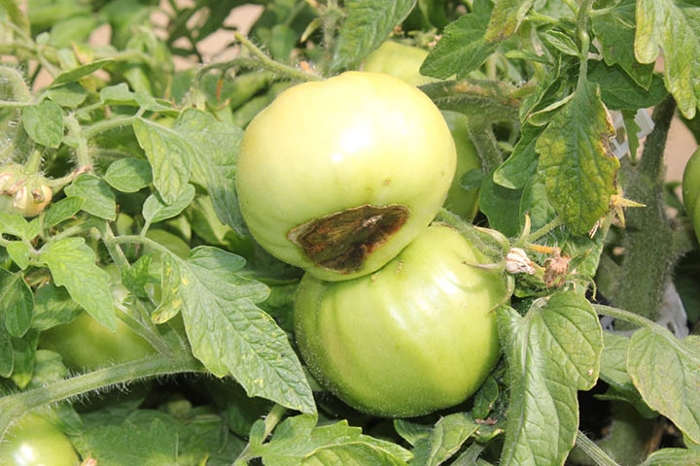
Blossom end rot
Reduces yield
Blossom end rot is caused by environmental conditions and this damage is often later colonized by a disease organism. It appears as a brown sunken dead area at the blossom end of the fruit and can affect tomatoes, peppers, eggplant, pumpkin, squash and melons.
In the garden, the conditions will appear if there is uneven watering or
Control:
- Soils should contain an adequate supply of calcium available to the plants - this is typically not a problem on Prairie soils or
in adequately fertilized soilless mixes. - Maintain regular watering (with fertilizer if necessary), not allowing the plants to dry out enough to wilt.
- Mulching your plants, including those in pots or raised beds, will go a long way towards preventing blossom end rot.
What doesn't work: eggshells, tums, and Epsom salts.
One complication? All of this assumes you're growing in soil (as in the ground, in dirt). If you're growing in a potting mix it's critical to know that potting mixes have essentially zero fertility unless it's added by the manufacturer. They are largely peatmoss or coir. Every time you grow in potting mix you will be deficient in every nutrient so it's very important to fertilize with a quality compost or with a full spectrum fertilizer that contains micronutrients.

